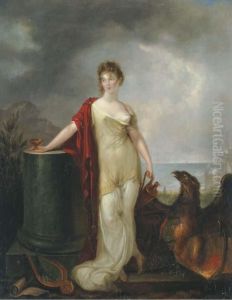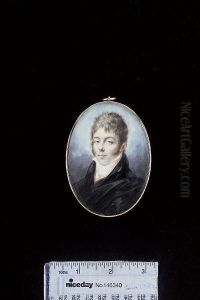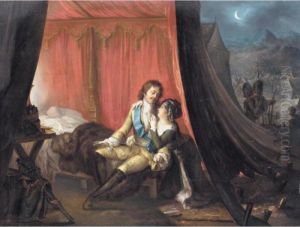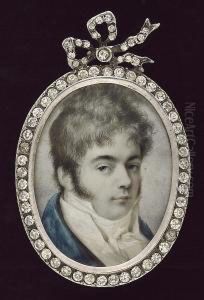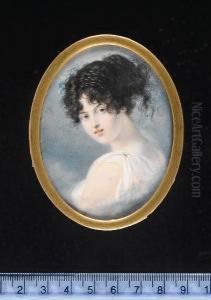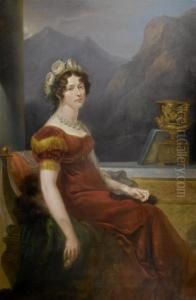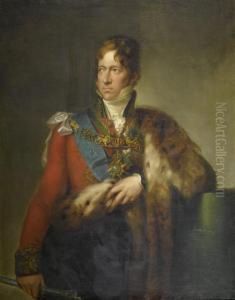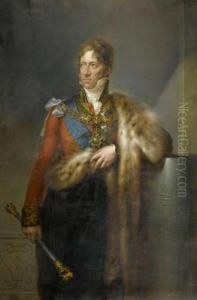Peter Eduard Strohling Paintings
Peter Eduard Strohling, born in 1768, was a distinguished German-Russian painter whose work spanned the late 18th and early 19th centuries. Not much is known about his early life, including his exact place of birth, but he emerged as a significant artist during a period rich in cultural and artistic evolution. Strohling is often remembered for his portraits and historical subjects, which were executed with a keen eye for detail and a profound sense of character.
Strohling's career took him across Europe, with notable periods in Russia and England, where his talent for portraiture won him commissions from the aristocracy and even royal families. His style was influenced by the neoclassical movement, which emphasized clarity, order, and beauty. This influence is evident in the elegant and refined portraits that constitute a significant portion of his oeuvre. Through these works, Strohling captured the subtle nuances of expression and attire, offering a window into the personalities and fashions of his era.
In Russia, Strohling's skills were highly appreciated at the court of Catherine the Great, where he contributed to the visual documentation of her reign and the broader Russian nobility. His work during this period reflects the opulence and grandeur of the Russian court, with a particular focus on the meticulous rendering of textiles and jewels that adorned his sitters.
After his time in Russia, Strohling moved to England, where he continued to work and gain recognition. His English period was marked by a series of portraits that captured the essence of British aristocracy during the late Georgian era. Despite the shifts in his geographical location, Strohling maintained a consistent quality in his work, adapting to the tastes and expectations of his patrons while preserving his distinctive artistic voice.
Peter Eduard Strohling's death in 1826 marked the end of a career that had significantly contributed to the portraiture of the late 18th and early 19th centuries. Though not as widely remembered as some of his contemporaries, his work continues to be appreciated for its technical skill and historical value. Strohling's portraits not only serve as artistic achievements but also as valuable documents of the personalities and fashions of his time, bridging the worlds of art and history.
